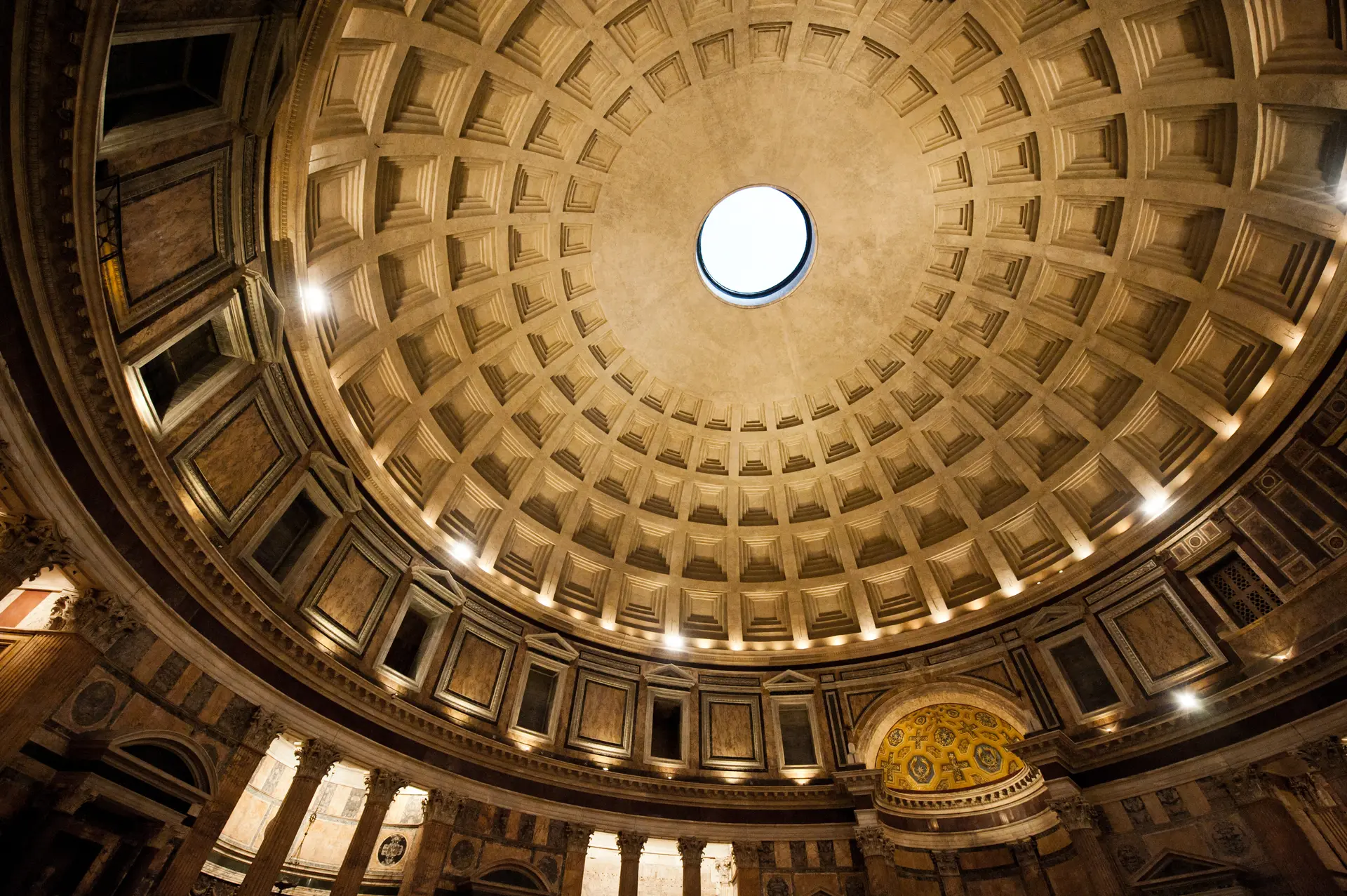Back to architecture
engineering
Pantheon Dome Engineering – Concrete, Coffers, Proportions, Structural Secrets
Pantheon architecture explained: dome proportions, concrete mix gradient, hidden arches, coffers weight reduction, drainage under the oculus.
11/7/2025
17 min read

The Pantheon dome (≈43.3 m diameter) remains the world’s largest unreinforced concrete dome. Its apparent simplicity masks an orchestrated structural strategy.
1. Geometry & Proportion
- Rotunda height = dome diameter → perfect sphere concept (symbolic cosmology: temple to all gods / later divine creation).
- Interior circle inscribed with floor pattern aligning with niche axes; rhythm of 16 coffers tiers (5 tiers) frames optical ascent.
2. Concrete Mix Gradient
- Lower courses: heavier aggregates (travertine, tufa) for compressive strength.
- Upper courses: progressively lighter (pumice) reducing dead load near oculus.
- Lime-pozzolana matrix: volcanic ash (pulvis) triggers hydraulic reaction, long-term resilience against water infiltration.
3. Support & Load Path
- Dome thrust travels down to a thickened wall ring with internal relieving arches.
- Brick-faced concrete drum acts as a compression ring; voids/niches reduce mass and allow curing.
- Rotational symmetry diffuses localized stress → fewer differential settlement cracks.
4. Coffers: Form + Function
- Decorative hierarchy + weight reduction (estimated several hundred tons saved).
- Possibly enhanced acoustic diffusion—reducing echo under liturgy.
- Unfinished or reworked plaster traces indicate on-site adaptation.
5. Hidden Arches & Chains?
- Current consensus: no metal chain around base (unlike later Renaissance speculation). Stability from mass & geometry.
- Brick relieving arches embedded above niche openings prevent stress concentrations.
6. Oculus Mechanics
- Diameter ≈ 8.9 m (light admission + structural apex removal to avoid heavy keystone).
- Rain management: floor slopes subtly to drainage holes (seen as small bronze circles) channeling water.
7. Material Durability Research
- SEM analysis: crystalline growth phases strengthen over centuries.
- Self-healing micro-cracking: continued pozzolanic reaction fills fissures.
- Salt efflorescence monitored; periodic gentle cleaning preserves patina.
8. Structural Comparisons
| Structure | Span | Material | Support Strategy |
|---|---|---|---|
| Pantheon | 43.3 m | Unreinforced concrete | Continuous drum + gradient mix |
| Hagia Sophia | 31 m main dome | Brick + mortar | Pendentives + buttressing half-domes |
| Brunelleschi’s Dome | 45 m (double shell) | Brick | Herringbone pattern + chains |
9. Vulnerabilities & Mitigation
- Seismic risk: Rome’s relatively moderate seismicity + uniform mass reduces catastrophic failure probability.
- Moisture ingress: monitored at cornice cracks; targeted grout injection campaigns.
10. Experiential Tip
Stand slightly off-center; observe parallax of coffer rings—reveals subtle curvature transitions and dome thickness illusion.
Bottom Line
Hadrianic engineering fused proportion, material science, and symbolic geometry. The dome persists because physics, chemistry, and design were harmonized.
About the Author

Architectural Analyst
I wrote this guide to help you experience the Pantheon without stress — with clear tickets, insider tips and the highlights you shouldn't miss.
Tags
Pantheon dome
Roman concrete
engineering
architecture proportions
coffers
Comments (0)
Leave a Comment
Loading comments...